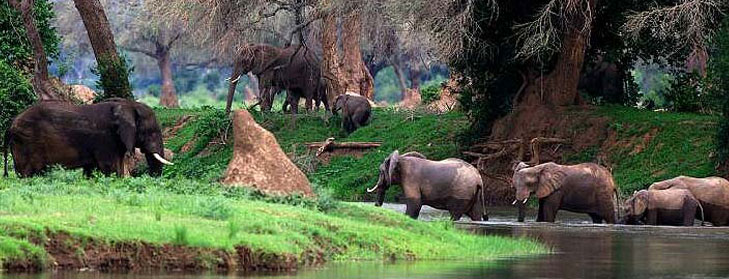The magical mokoro
 In the Okavango Delta a trip by mokoro (indigenous canoe) is cental to the whole safari adventure. The mokoro (plural mekoro) was introduced to the Okavango Delta by the Bayei people in the 18th century. Originally it was hewn by axe from a single ebony, or sausage tree. It had a rounded bottom and no keel and appeared difficult to balance but it proved to be ideally suited to the calm Okavango Delta waters. The boat builders hollowed out the whole trunk until there was sufficient space for two passengers and the poler, who stands in the stern and punts the mokoro with a ngashi, a pole made from the mogonono tree.
In the Okavango Delta a trip by mokoro (indigenous canoe) is cental to the whole safari adventure. The mokoro (plural mekoro) was introduced to the Okavango Delta by the Bayei people in the 18th century. Originally it was hewn by axe from a single ebony, or sausage tree. It had a rounded bottom and no keel and appeared difficult to balance but it proved to be ideally suited to the calm Okavango Delta waters. The boat builders hollowed out the whole trunk until there was sufficient space for two passengers and the poler, who stands in the stern and punts the mokoro with a ngashi, a pole made from the mogonono tree.
As demands for the mokoros rose with the coming of tourism, the precious, hardwood sausage trees came under threat and conservationists introduced a new mokoro made entirely from fiberglass, which has all the boating qualities of the original wooden mokoro.
Nowadays almost all mokoros are made out of fiberglass.
Mokoro trips in the Okavango Delta can last several days with the same poler who takes visitors to islands for picnics, bush walks or even overnight camps.







